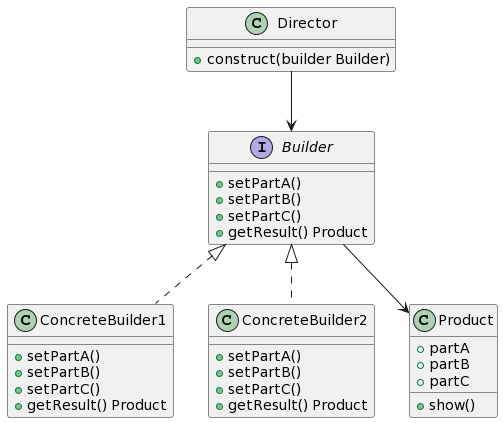1. What is the Builder Pattern
The builder pattern is a creational design pattern that allows you to create complex objects step by step. It separates the construction of an object from its representation and allows different combinations of properties and parameters to be configured as needed.
2. Characteristics and Advantages of the Builder Pattern
The characteristics and advantages of the builder pattern include:
- Encapsulation of the object's creation and assembly process, separating client code from the specific building process, making it more flexible and maintainable.
- Different builders can be used to configure different properties and parameters to create different objects.
- Improves code readability and maintainability, making the code easier to understand and extend.
- Helps avoid using too many parameters in the constructor, making the code more concise.
3. Application Scenarios of the Builder Pattern
The builder pattern is suitable for the following scenarios:
- When complex objects need to be built step by step, the builder pattern can be used.
- When the object's construction process is complex and there are many different combinations of configurations, the builder pattern can be used.
- When creating objects with different representations, the builder pattern can be used.
4. Implementation of the Builder Pattern in Golang
4.1 UML Class Diagram

4.2 Basic Structure of the Builder Pattern
In Golang, we can use interfaces and structs to implement the basic structure of the builder pattern. Below is an example code:
type Builder interface {
setPartA()
setPartB()
setPartC()
getResult() *Product
}
type ConcreteBuilder struct {
product *Product
}
func (b *ConcreteBuilder) setPartA() {
b.product.partA = "Part A"
}
func (b *ConcreteBuilder) setPartB() {
b.product.partB = "Part B"
}
func (b *ConcreteBuilder) setPartC() {
b.product.partC = "Part C"
}
func (b *ConcreteBuilder) getResult() *Product {
return b.product
}
type Product struct {
partA string
partB string
partC string
}
func (p *Product) show() {
fmt.Println("Part A:", p.partA)
fmt.Println("Part B:", p.partB)
fmt.Println("Part C:", p.partC)
}
type Director struct {
builder Builder
}
func (d *Director) construct() {
d.builder.setPartA()
d.builder.setPartB()
d.builder.setPartC()
}
4.3 Creating Complex Objects Using the Builder Pattern
Below is an example code demonstrating how to create complex objects using the builder pattern:
builder := &ConcreteBuilder{}
director := &Director{builder: builder}
director.construct()
product := builder.getResult()
product.show()
In the above code, we create a ConcreteBuilder object and a Director object. Then, we use the Director object to call the construct method to gradually build the complex object. Finally, we use the getResult method of the builder object to obtain the built product object and display its different parts via the show method.
4.4 Relationship between Builder Pattern and Other Design Patterns
The relationship between the Builder Pattern and other design patterns includes:
- The Builder Pattern can be combined with the Abstract Factory Pattern to create multiple product series.
- The Builder Pattern can be combined with the Singleton Pattern to create a complex construction process for a singleton object.
This concludes the tutorial on the Golang Factory Method Pattern. By reading this tutorial, you should have a better understanding of the Builder Pattern and know how to implement it in Golang. I hope this tutorial is helpful for your learning!